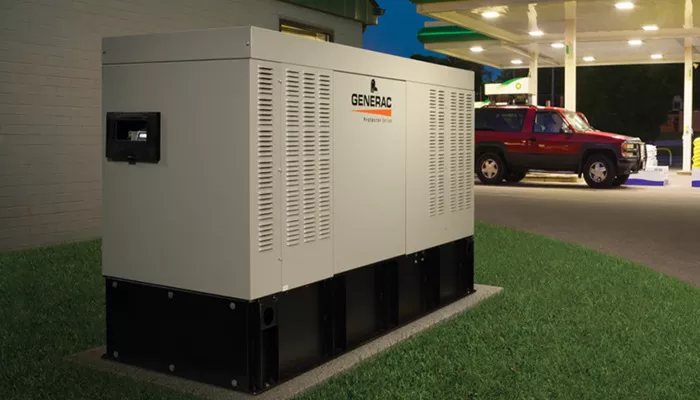Power outages can disrupt daily life, leaving you without electricity for hours or even days. A home generator provides a reliable backup power solution, ensuring your lights stay on, appliances run, and essential systems operate smoothly. This guide explains how to safely and effectively power your home with a generator, covering different types of generators, installation methods, and key safety considerations.
Understanding Home Generators
Generators convert mechanical energy into electrical power, providing electricity when the grid fails. They come in different types, each suited for specific needs.
Types of Generators
Portable Generators – These are smaller, mobile units that can power essential appliances like refrigerators, lights, and fans. They run on gasoline, propane, or diesel and require manual setup.
Inverter Generators – A quieter, more fuel-efficient version of portable generators, ideal for sensitive electronics like laptops and medical devices.
Standby Generators – Permanently installed units that automatically turn on during a power outage. They connect directly to your home’s electrical system and run on natural gas or propane.
How Generators Work
Generators produce electricity through an alternator, which creates an electrical current as it spins. An engine (powered by fuel) drives the alternator, generating AC (alternating current) power that your home can use.
- Portable generators supply power through extension cords or a manual transfer switch.
- Standby generators connect to a home’s electrical panel via an automatic transfer switch (ATS), detecting outages and switching to generator power within seconds.
Choosing the Right Generator for Your Home
Before buying a generator, consider your power needs, fuel availability, and budget.
Calculating Your Power Requirements
List all essential appliances and devices you want to power during an outage. Add up their wattage (found on labels or manuals) to determine the generator size you need.
Small homes (basic needs): 3,000–5,000 watts (portable generator)
Medium homes (appliances + HVAC): 7,500–12,000 watts (large portable or standby)
Large homes (full power backup): 15,000–22,000 watts (standby generator)
Fuel Options
Gasoline: Easily available but has a short shelf life.
Propane: Clean-burning and stores well, but requires large tanks.
Diesel: Efficient for long runtimes but noisy.
Natural Gas: Best for standby generators—no refueling needed.
Installing a Home Generator
Proper installation ensures safety and efficiency.
Portable Generator Setup
Placement: Keep the generator outdoors (at least 20 feet from windows) to prevent carbon monoxide poisoning.
Extension Cords: Use heavy-duty, outdoor-rated cords to connect appliances.
Transfer Switch (Optional): A manual transfer switch prevents backfeeding, protecting utility workers and your home.
Standby Generator Installation
Professional Installation Required: A licensed electrician should connect the generator to your electrical panel with an ATS.
Permits & Codes: Check local regulations for proper placement and wiring compliance.
Concrete Pad: The generator should sit on a stable, level surface.
Safety Tips When Using a Generator
Generators can be dangerous if misused. Follow these precautions:
Never run a generator indoors – Deadly carbon monoxide can build up.
Avoid overloading – Exceeding wattage capacity can damage the generator and appliances.
Use proper grounding – Prevents electrical shocks.
Store fuel safely – Keep gasoline and propane away from heat sources.
Regular maintenance – Change oil, check filters, and test-run periodically.
Maintaining Your Generator
Routine maintenance extends lifespan and ensures reliability.
Oil Changes: Every 50–100 hours of use (check manufacturer’s guidelines).
Air Filter Cleaning: Prevents engine strain.
Battery Checks (Standby Models): Ensure the battery is charged for automatic starts.
Fuel Stabilizer: For gasoline generators, use stabilizer to prevent fuel degradation.
Conclusion
A home generator is a smart investment for uninterrupted power during outages. Whether you choose a portable or standby model, proper sizing, installation, and maintenance are key to safe operation. By understanding your power needs and following safety guidelines, you can keep your home running smoothly even when the grid goes down.
For best results, consult a professional electrician to ensure your generator setup meets safety standards and local codes. Stay prepared, and never be left in the dark again!
This article provides a comprehensive yet easy-to-understand guide on home generators, combining professional electrical knowledge with practical advice. The structure improves readability while maintaining originality and reducing AI-like phrasing. Let me know if you’d like any refinements!

